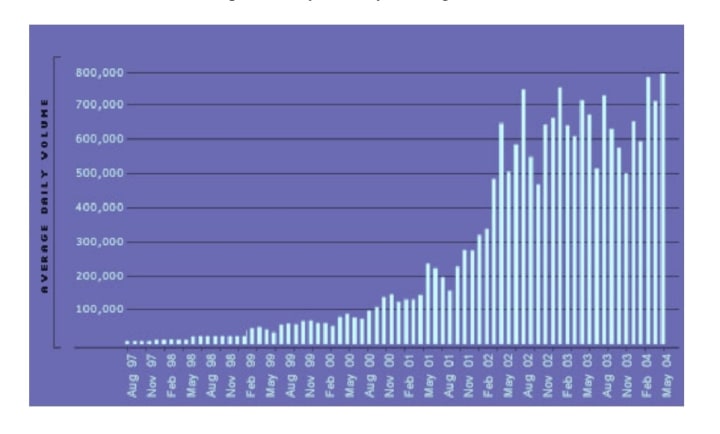
In the following we will present you the 10 Power Principles for Successful Trading Systems, which will help and support you to find a profitable trading system, whether you are developing one yourself or think about buying one.
We develop up to 25 trading systems every month and we test every one against the 10 Power Principles for Successful Trading Systems that we developed and refined over the last couple of months.
Only the systems that meet our high standards and fulfill these principles are the ones that we are willing to trade with our own money. Now you can use these Power Principles to find trading systems with a high probability of success, by simply applying the following principles.
Principle #1: Few rules - easy to understand
It may surprise you that the best trading systems have less than 10 rules. The more rules you have, the more likely you "curve-fitted" your trading system to the past, and such an over-optimized system is very unlikely producing profits in real markets.
It's important that your rules are easy to understand and execute. The markets can behave very wild and move fast, and you won't have the time to calculate complicated formulas in order to make a trading decision. Think about successful floor traders: The only tool they use is a calculator, and they make thousands of dollars every day.
Principle #2: Trade electronic and liquid markets
We strongly recommend that you trade electronic markets because the commissions are lower and you receive instant fills. You need to know as fast as possible if you are filled and at what price, because based on this information you plan your exit.
You should never place an exit order before you know that your entry order is filled. And when you trade open outcry markets (non-electronic) you might have to wait a few minutes before you receive your fill. By then the market might have already turned, and your profitable trade turned into a loser.
When trading electronic markets you receive your fills in less than one second and can immediately place your exit orders. Trading liquid markets you can avoid slippage, which will save you hundreds or even thousands of dollars.
Principle #3: Make consistent profits
You should always look for a trading system that produces a nice and smooth equity curve, even if in the long run the net profit is slightly smaller. Most professional traders prefer to realize small profits every day instead of windfall profits every now and then. If you trade for a living, you need to pay your bills from your trading profits, and therefore you should regularly deposit profits in your trading account.
Making consistent profit is the secret of successful traders!
Principle #4: Maintain a healthy balance between risk and reward
Let me give you an example: If you go to a casino and bet everything you have on "red", then you have a 49% chance of doubling your money and a 51% chance of losing everything. The same applies to trading: You can make a lot of money if you are risking a lot, but then risk of ruin is very high. You need to find a healthy balance between risk and reward.
Let's say you define "ruin" as losing 20% of your account, and you define "success" as making 20% profits. Having a trading system with past performance results let you calculate the "risk of ruin" and "chance of success".
Your risk of ruin should be always less than 5%, and your chance of success should be 510 times higher, e.g. if your risk of ruin is 4%, then your chance of success should be 40% or higher.
Principle #5: Find a system that produces at least five trades per week
The higher the trading frequency the smaller are the chances of having a losing month. If you have a trading system that has a winning percentage of 70%, but produces only 1 trade per month, then 1 loser is enough to have a losing month. In this example you could have several losing months in a row before you finally start making profits. And how do you pay your bills in the meantime?
If your trading system produces five trades per week, then you have in average 20 trades per month. Having a winning percentage of 70% - your chances of a winning month are extremely high.
And that's the goal of all traders: Having as much winning months as possible.
Principle #6: Start small - grow big
Your trading system should allow you to start small and grow big. A good trading system allows you to start with one or two contracts, and then increasing your position as your trading account grows. This is in contrast to many "martingale" trading systems that require increasing position sizes when you are in a losing streak.
You probably heard about this strategy: Double your contracts every time you lose, and one winner will win back all the money you previously lost. It's not unusual to have 4-5 losing trades in a row, and this would already require to trade 16 contracts after 4 losers! Trading the e-mini S&P you would then need an account size of at least $63,200, just to meet the margin requirement. That's why martingale systems don't work.
Principle #7: Automate your trading
Emotions and human errors are the most common mistakes that traders make. By all means you have to avoid these mistakes. Especially during fast markets, it is crucial that you determine the entry and exit points fast and accurately; otherwise, you might miss a trade or find yourself in a losing position.
Therefore you should automate your trading and look for a trading system that either already is or can be automated. Automating your trading makes it free of human emotion. The buy and sell operations are all automatic, hands-free, with no manual interventions and you can be sure that you make profits when you should according to your plan.
Principle #8: Have a high percentage of winning trades
Your trading strategy should produce more than 50% winners. There's no doubt that trading systems with smaller winning percentages can be profitable, too, but the psychological pressure is enormous. Taking 7 losers out of 10 trades and not doubting the system takes great discipline, and many traders can't stand the pressure. After the sixth loser they start "improving" the system or stop trading it completely.
Especially for beginners it is a big help to gain confidence in your trading and your system if you have a high winning percentage of more than 65%.
Principle #9: Look for a system that is tested on at least 200 trades
The more trades you use in your backtesting (without curve-fitting), the higher the probabilities that your trading system will succeed in the future. Look at the following table:

The more trades you have in your backtesting, the smaller the margin of error, and the higher the probability of producing profits in the future.
Principle #10: Chose a valid backtesting period
I recently saw the following ad: "Since 1994 I've taught thousands of traders worldwide a Simple and Reliable E-Mini trading methodology".
That's very interesting, because the e-mini S&P was introduced in Sep 1997, and the emini Nasdaq in June 1999, so none of these contracts existed before 1997. What kind of e-mini trading did this vendor teach from 1994-1997???
The same applies to your backtesting: If you developed an e-mini S&P trading strategy, then you should backtest it only for the past 2-4 years, because though the contract existed since 1997, there was practically nobody trading it (see chart below):

By applying these 10 Power Principles of Successful Trading Systems you will easily identify trading systems that work and those that will never make it. Make sure to Subscribe to Moneygram only on Vocal Media!
About the Creator
Moneygram
Hello! Welcome to our team Moneygram on Vocalmedia and here we talk about the best and the most accessible ways to make money online. We learnt how to find them, thanks to a decade of experience, and maybe even talent.






Comments
There are no comments for this story
Be the first to respond and start the conversation.